Planetary Frequencies.

Planetary Frequencies.
More Posts from Jupyterjones and Others

This shows that the probability of a random variable is maximum at the average and diminishes as one goes away from it, eventually leading to a bell-curve.
Depixellation? Or hallucination?
There’s an application for neural nets called “photo upsampling” which is designed to turn a very low-resolution photo into a higher-res one.
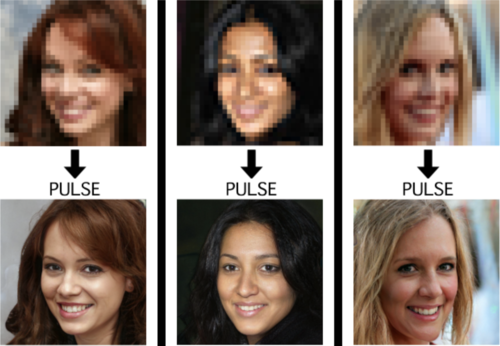
This is an image from a recent paper demonstrating one of these algorithms, called “PULSE: Self-Supervised Photo Upsampling via Latent Space Exploration of Generative Models”
It’s the neural net equivalent of shouting “enhance!” at a computer in a movie - the resulting photo is MUCH higher resolution than the original.
Could this be a privacy concern? Could someone use an algorithm like this to identify someone who’s been blurred out? Fortunately, no. The neural net can’t recover detail that doesn’t exist - all it can do is invent detail.
This becomes more obvious when you downscale a photo, give it to the neural net, and compare its upscaled version to the original.

As it turns out, there are lots of different faces that can be downscaled into that single low-res image, and the neural net’s goal is just to find one of them. Here it has found a match - why are you not satisfied?
And it’s very sensitive to the exact position of the face, as I found out in this horrifying moment below. I verified that yes, if you downscale the upscaled image on the right, you’ll get something that looks very much like the picture in the center. Stand way back from the screen and blur your eyes (basically, make your own eyes produce a lower-resolution image) and the three images below will look more and more alike. So technically the neural net did an accurate job at its task.

A tighter crop improves the image somewhat. Somewhat.
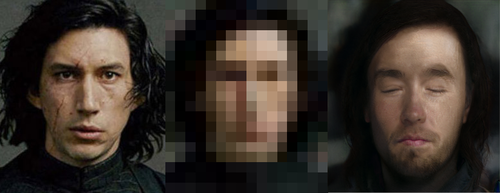
The neural net reconstructs what it’s been rewarded to see, and since it’s been trained to produce human faces, that’s what it will reconstruct. So if I were to feed it an image of a plush giraffe, for example…

Given a pixellated image of anything, it’ll invent a human face to go with it, like some kind of dystopian computer system that sees a suspect’s image everywhere. (Building an algorithm that upscales low-res images to match faces in a police database would be both a horrifying misuse of this technology and not out of character with how law enforcement currently manipulates photos to generate matches.)
However, speaking of what the neural net’s been rewarded to see - shortly after this particular neural net was released, twitter user chicken3gg posted this reconstruction:
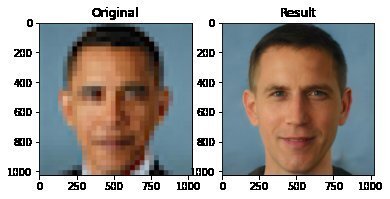
Others then did experiments of their own, and many of them, including the authors of the original paper on the algorithm, found that the PULSE algorithm had a noticeable tendency to produce white faces, even if the input image hadn’t been of a white person. As James Vincent wrote in The Verge, “It’s a startling image that illustrates the deep-rooted biases of AI research.”
Biased AIs are a well-documented phenomenon. When its task is to copy human behavior, AI will copy everything it sees, not knowing what parts it would be better not to copy. Or it can learn a skewed version of reality from its training data. Or its task might be set up in a way that rewards - or at the least doesn’t penalize - a biased outcome. Or the very existence of the task itself (like predicting “criminality”) might be the product of bias.
In this case, the AI might have been inadvertently rewarded for reconstructing white faces if its training data (Flickr-Faces-HQ) had a large enough skew toward white faces. Or, as the authors of the PULSE paper pointed out (in response to the conversation around bias), the standard benchmark that AI researchers use for comparing their accuracy at upscaling faces is based on the CelebA HQ dataset, which is 90% white. So even if an AI did a terrible job at upscaling other faces, but an excellent job at upscaling white faces, it could still technically qualify as state-of-the-art. This is definitely a problem.
A related problem is the huge lack of diversity in the field of artificial intelligence. Even an academic project with art as its main application should not have gone all the way to publication before someone noticed that it was hugely biased. Several factors are contributing to the lack of diversity in AI, including anti-Black bias. The repercussions of this striking example of bias, and of the conversations it has sparked, are still being strongly felt in a field that’s long overdue for a reckoning.
Bonus material this week: an ongoing experiment that’s making me question not only what madlibs are, but what even are sentences. Enter your email here for a preview.
My book on AI is out, and, you can now get it any of these several ways! Amazon - Barnes & Noble - Indiebound - Tattered Cover - Powell’s - Boulder Bookstore

Six stages of debugging
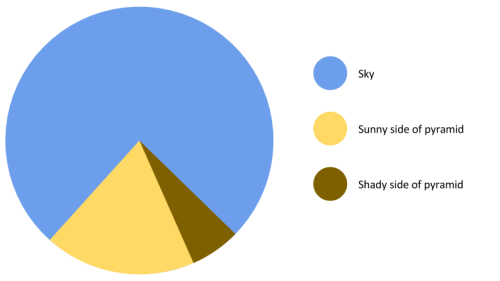
Cassini Spacecraft: Top Discoveries
Our Cassini spacecraft has been exploring Saturn, its stunning rings and its strange and beautiful moons for more than a decade.

Having expended almost every bit of the rocket propellant it carried to Saturn, operators are deliberately plunging Cassini into the planet to ensure Saturn’s moons will remain pristine for future exploration – in particular, the ice-covered, ocean-bearing moon Enceladus, but also Titan, with its intriguing pre-biotic chemistry.
Let’s take a look back at some of Cassini’s top discoveries:
Titan

Under its shroud of haze, Saturn’s planet-sized moon Titan hides dunes, mountains of water ice and rivers and seas of liquid methane. Of the hundreds of moons in our solar system, Titan is the only one with a dense atmosphere and large liquid reservoirs on its surface, making it in some ways more like a terrestrial planet.

Both Earth and Titan have nitrogen-dominated atmospheres – over 95% nitrogen in Titan’s case. However, unlike Earth, Titan has very little oxygen; the rest of the atmosphere is mostly methane and traced amounts of other gases, including ethane.

There are three large seas, all located close to the moon’s north pole, surrounded by numerous smaller lakes in the northern hemisphere. Just one large lake has been found in the southern hemisphere.
Enceladus

The moon Enceladus conceals a global ocean of salty liquid water beneath its icy surface. Some of that water even shoots out into space, creating an immense plume!

For decades, scientists didn’t know why Enceladus was the brightest world in the solar system, or how it related to Saturn’s E ring. Cassini found that both the fresh coating on its surface, and icy material in the E ring originate from vents connected to a global subsurface saltwater ocean that might host hydrothermal vents.

With its global ocean, unique chemistry and internal heat, Enceladus has become a promising lead in our search for worlds where life could exist.
Iapetus

Saturn’s two-toned moon Iapetus gets its odd coloring from reddish dust in its orbital path that is swept up and lands on the leading face of the moon.

The most unique, and perhaps most remarkable feature discovered on Iapetus in Cassini images is a topographic ridge that coincides almost exactly with the geographic equator. The physical origin of the ridge has yet to be explained…

It is not yet year whether the ridge is a mountain belt that has folded upward, or an extensional crack in the surface through which material from inside Iapetus erupted onto the surface and accumulated locally.
Saturn’s Rings

Saturn’s rings are made of countless particles of ice and dust, which Saturn’s moons push and tug, creating gaps and waves.

Scientists have never before studied the size, temperature, composition and distribution of Saturn’s rings from Saturn obit. Cassini has captured extraordinary ring-moon interactions, observed the lowest ring-temperature ever recorded at Saturn, discovered that the moon Enceladus is the source for Saturn’s E ring, and viewed the rings at equinox when sunlight strikes the rings edge-on, revealing never-before-seen ring features and details.
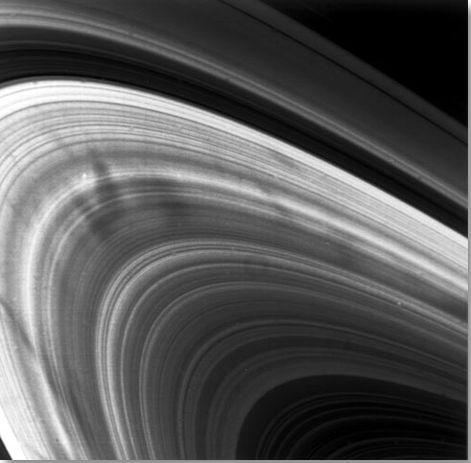
Cassini also studied features in Saturn’s rings called “spokes,” which can be longer than the diameter of Earth. Scientists think they’re made of thin icy particles that are lifted by an electrostatic charge and only last a few hours.
Auroras

The powerful magnetic field that permeates Saturn is strange because it lines up with the planet’s poles. But just like Earth’s field, it all creates shimmering auroras.

Auroras on Saturn occur in a process similar to Earth’s northern and southern lights. Particles from the solar wind are channeled by Saturn’s magnetic field toward the planet’s poles, where they interact with electrically charged gas (plasma) in the upper atmosphere and emit light.
Turbulent Atmosphere

Saturn’s turbulent atmosphere churns with immense storms and a striking, six-sided jet stream near its north pole.

Saturn’s north and south poles are also each beautifully (and violently) decorated by a colossal swirling storm. Cassini got an up-close look at the north polar storm and scientists found that the storm’s eye was about 50 times wider than an Earth hurricane’s eye.

Unlike the Earth hurricanes that are driven by warm ocean waters, Saturn’s polar vortexes aren’t actually hurricanes. They’re hurricane-like though, and even contain lightning. Cassini’s instruments have ‘heard’ lightning ever since entering Saturn orbit in 2004, in the form of radio waves. But it wasn’t until 2009 that Cassini’s cameras captured images of Saturnian lighting for the first time.

Cassini scientists assembled a short video of it, the first video of lightning discharging on a planet other than Earth.

Cassini’s adventure will end soon because it’s almost out of fuel. So to avoid possibly ever contaminating moons like Enceladus or Titan, on Sept. 15 it will intentionally dive into Saturn’s atmosphere.

The spacecraft is expected to lose radio contact with Earth within about one to two minutes after beginning its decent into Saturn’s upper atmosphere. But on the way down, before contact is lost, eight of Cassini’s 12 science instruments will be operating! More details on the spacecraft’s final decent can be found HERE.
Make sure to follow us on Tumblr for your regular dose of space: http://nasa.tumblr.com


Weirdly anti-millennial articles have scraped the bottom of the barrel so hard that they are now two feet down into the topsoil

-
 itsjonhyjay liked this · 9 months ago
itsjonhyjay liked this · 9 months ago -
 sockidemic liked this · 9 months ago
sockidemic liked this · 9 months ago -
 chryso-poeia liked this · 1 year ago
chryso-poeia liked this · 1 year ago -
 renwisdo liked this · 1 year ago
renwisdo liked this · 1 year ago -
 amongstthelowandempty liked this · 1 year ago
amongstthelowandempty liked this · 1 year ago -
 darlingsally reblogged this · 1 year ago
darlingsally reblogged this · 1 year ago -
 strdstwshs liked this · 1 year ago
strdstwshs liked this · 1 year ago -
 the-narchotix liked this · 1 year ago
the-narchotix liked this · 1 year ago -
 infinity-of-my-universe reblogged this · 1 year ago
infinity-of-my-universe reblogged this · 1 year ago -
 deadgirl-666 reblogged this · 1 year ago
deadgirl-666 reblogged this · 1 year ago -
 deadgirl-666 liked this · 1 year ago
deadgirl-666 liked this · 1 year ago -
 bananaede reblogged this · 1 year ago
bananaede reblogged this · 1 year ago -
 bananaede liked this · 1 year ago
bananaede liked this · 1 year ago -
 chleopatrah reblogged this · 1 year ago
chleopatrah reblogged this · 1 year ago -
 thesixth6element-blog liked this · 1 year ago
thesixth6element-blog liked this · 1 year ago -
 voodoo-organ-transplant reblogged this · 1 year ago
voodoo-organ-transplant reblogged this · 1 year ago -
 chleopatrah reblogged this · 1 year ago
chleopatrah reblogged this · 1 year ago -
 kennyomegamilk reblogged this · 1 year ago
kennyomegamilk reblogged this · 1 year ago -
 dotglobal liked this · 1 year ago
dotglobal liked this · 1 year ago -
 bootanist reblogged this · 1 year ago
bootanist reblogged this · 1 year ago -
 bootanist liked this · 1 year ago
bootanist liked this · 1 year ago -
 miraflawless liked this · 1 year ago
miraflawless liked this · 1 year ago -
 lmur803 liked this · 1 year ago
lmur803 liked this · 1 year ago -
 universalstudent liked this · 1 year ago
universalstudent liked this · 1 year ago -
 purusadivine reblogged this · 1 year ago
purusadivine reblogged this · 1 year ago -
 purusadivine liked this · 1 year ago
purusadivine liked this · 1 year ago -
 fayaziza reblogged this · 1 year ago
fayaziza reblogged this · 1 year ago -
 voodooeyez reblogged this · 1 year ago
voodooeyez reblogged this · 1 year ago -
 voodooeyez liked this · 1 year ago
voodooeyez liked this · 1 year ago -
 indgosoulj liked this · 1 year ago
indgosoulj liked this · 1 year ago -
 thatsitthatstheusername reblogged this · 1 year ago
thatsitthatstheusername reblogged this · 1 year ago -
 age-of-wisdom-1111 liked this · 1 year ago
age-of-wisdom-1111 liked this · 1 year ago -
 goldlionaz reblogged this · 1 year ago
goldlionaz reblogged this · 1 year ago -
 smokedjoint reblogged this · 1 year ago
smokedjoint reblogged this · 1 year ago -
 scopophilic1997 liked this · 1 year ago
scopophilic1997 liked this · 1 year ago -
 happyzenmonk reblogged this · 1 year ago
happyzenmonk reblogged this · 1 year ago -
 ohsaintjoan liked this · 1 year ago
ohsaintjoan liked this · 1 year ago -
 forest-dwelling-being liked this · 1 year ago
forest-dwelling-being liked this · 1 year ago -
 bboonnkk reblogged this · 1 year ago
bboonnkk reblogged this · 1 year ago -
 thepowerlife reblogged this · 1 year ago
thepowerlife reblogged this · 1 year ago -
 thepowerlife liked this · 1 year ago
thepowerlife liked this · 1 year ago -
 checazzoboots reblogged this · 1 year ago
checazzoboots reblogged this · 1 year ago -
 thr3shold reblogged this · 1 year ago
thr3shold reblogged this · 1 year ago -
 alittleannihilati0n liked this · 1 year ago
alittleannihilati0n liked this · 1 year ago -
 smokedjoint liked this · 1 year ago
smokedjoint liked this · 1 year ago -
 twinfishmercury reblogged this · 1 year ago
twinfishmercury reblogged this · 1 year ago
![How To Draw A Regular Pentagon [x]](https://64.media.tumblr.com/e789070555deb967c4b2323363be07b9/tumblr_opd8xi3HCJ1vnq1cro1_500.gif)
